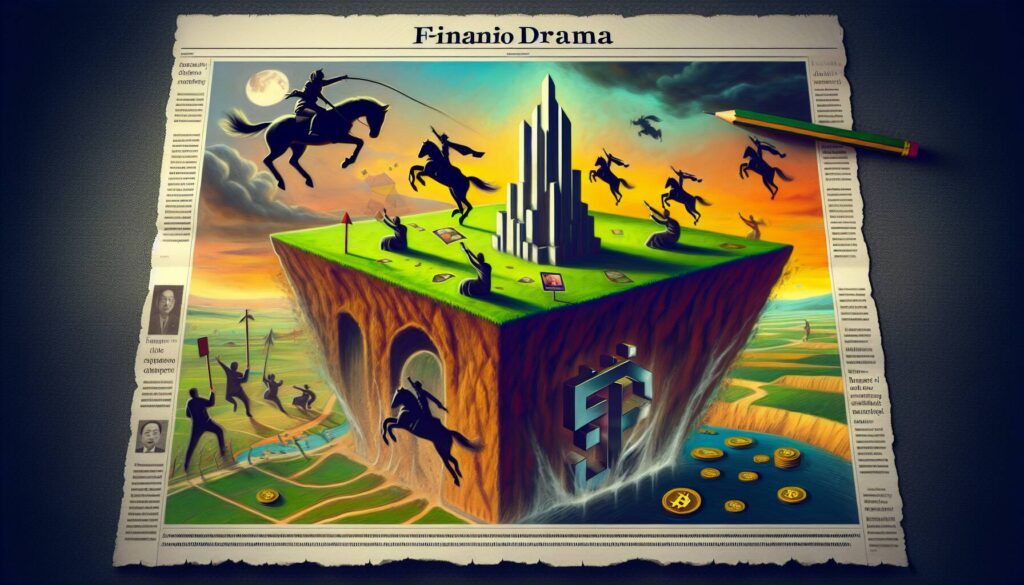The landscape of cryptocurrency is evolving, and one of the most compelling trends on the horizon is the rise of Real World Assets (RWAs). These on-chain representations of ownership in traditional assets like real estate, debt, and equity are capturing the attention of both crypto enthusiasts and institutional investors. As we move into 2024, the tokenization of RWAs has gained momentum, driven by significant developments including major financial players like BlackRock venturing into tokenization efforts and regulatory advancements across various regions.
Throughout this past year, we’ve witnessed banks and asset managers transition from simple trial runs to full-scale implementations of RWA tokenization. Noteworthy licenses such as the one granted to 21X under the DLT Pilot Regime and the licensing of Nomura’s Laser Digital within the Abu Dhabi Global Market represent a critical step forward, reinforcing the legitimacy and potential of this market.
The growth trajectory for RWAs is nothing short of astonishing. As of now, over billion worth of RWAs are already on-chain, and projections suggest this figure could soar to at least 0 billion by 2025!
This explosion in value points to broader industry sentiments recognizing RWAs as a lucrative narrative within the crypto space. The anticipated year of 2025 is poised to be pivotal as tokenization is expected to solidify its presence, suggesting a significant shift in how investors view and engage with these assets. The factors propelling this growth include increased collateral mobility and the innovation of more complex financial products, which will likely draw investor preferences toward tokenized assets.
However, while the potential is immense, regulatory clarity remains a challenge that the industry must overcome. Prominent changes in leadership at the SEC and CFTC may pave the way for a unified legal framework surrounding digital assets, which could enhance institutional participation and investor confidence. Additionally, examples from the EU, Switzerland, and Singapore illustrate that a robust regulatory environment can only enhance global momentum toward RWA tokenization.
As the gap between traditional finance and the crypto community continues to close, the utility of RWA governance and utility tokens is becoming increasingly evident.
These tokens provide not only cost savings and operational efficiencies but also entice participation through benefits like discounted trading fees and priority access to investments. Looking ahead, it’s clear that tokenization is not just a concept of the future—it’s a present-day reality reshaping financial landscapes and creating new economic opportunities. In this dynamic environment, staying informed about these developments will be essential for anyone invested in the future of finance.

Key Points on Real World Assets (RWAs)
Here are the essential aspects of the growing trend of Real World Assets (RWAs) and their implications for individuals and investors:
- Definition of RWAs: RWAs are on-chain representations of ownership in traditional assets, such as real estate, debt, equity, and fund LP units.
- Increased Popularity: Throughout 2024, RWA tokenization gained traction due to:
- BlackRock’s tokenization of one of its funds.
- Institutional movement from proofs of concept to operational use cases.
- Licenses granted, including 21X under the DLT Pilot Regime and Nomura’s Laser Digital in Abu Dhabi.
- Significant Growth Projections: The on-chain RWA market is expected to grow from over billion in 2025 to at least 0 billion, excluding stablecoins.
- Investors’ Shift in Preference: As tokenized assets prove their benefits, investors might prefer them over traditional non-tokenized assets, affecting investment strategies and market dynamics.
- Real Estate Value Opportunities: Tokenization of real estate could unlock over billion in value through savings in various financial products like HELOCs and collateralized loans.
- Regulatory Developments: Key appointments in U.S. regulatory bodies may enhance clarity in digital asset regulations, promoting confidence and institutional participation.
- Bridging Crypto and Traditional Finance: RWA utility/governance tokens could attract investments into RWAs, evolving the relationship between the crypto community and traditional finance.
- Importance of Regulatory Clarity: Improved regulations are expected to increase institutional confidence and spur innovation, potentially expanding the adoption of tokenization.
“Tokenization is no longer a future concept; it’s here and will continue to grow.”
Analyzing the Rise of Real World Assets (RWAs) in Crypto
The emergence of Real World Assets (RWAs) within the cryptocurrency ecosystem marks a pivotal moment for the digital finance sector. Tokenization of traditional assets—spanning real estate, equities, and more—has gained traction throughout 2024, accelerated by major players like BlackRock delving into the space. Unlike their predecessors, who primarily focused on speculative investments, today’s investors are showing a keen interest in the integration of RWAs, pushing the narrative to the forefront of the industry.
Competitive Advantages: The transition from concept to reality, as noted with the successful pilot programs from banks and asset managers, highlights a growing confidence in RWAs. This burgeoning market is appealing not only for the diversity it offers but also for the operational efficiencies and cost savings that come with tokenization. Institutions are beginning to realize that by bringing RWAs on-chain, they can unlock liquidity, enhance transaction speed, and provide the transparency that investors crave. Moreover, the likelihood of regulatory clarity in the U.S. and other jurisdictions boosts investor confidence and potential market engagement, transforming RWAs from a nascent concept to a robust investment avenue.
Disadvantages: Despite these advancements, hurdles remain—most notably the regulatory landscape that still poses uncertainty. As officials like Paul Atkins take on significant roles in the SEC and CFTC, there’s anticipation regarding regulatory frameworks, but until these are firmly established, institutional hesitation is a concern. Furthermore, the crypto community’s historical skepticism towards traditional finance can create friction as RWAs gain traction, potentially alienating segments of both ecosystems that fear being dragged into a set of regulations they are unaccustomed to. Reliable information channels and education are essential to bridge this divide.
For institutional investors and crypto enthusiasts alike, the move towards RWAs heralds a promising frontier filled with opportunities. However, the apprehension among traditional investors about venturing into the often-volatile crypto space could pose challenges. Simultaneously, crypto purists may view RWAs as a departure from the fundamentals of decentralization, potentially creating a rift in community alignment. Thus, while RWAs can facilitate deeper integration between crypto and traditional finance, they may also spark conflicts over operational ideologies, particularly among staunch advocates of decentralized finance (DeFi).
Overall, the momentum surrounding RWAs is undeniable, and as the narrative solidifies, active engagement from both traditional financial institutions and crypto innovators is crucial. Connections forged through RWA governance and utility tokens could pave the way for novel opportunities, yet careful navigation of the evolving regulatory landscape will be essential to ensure a harmonious and productive relationship between these two worlds.

















